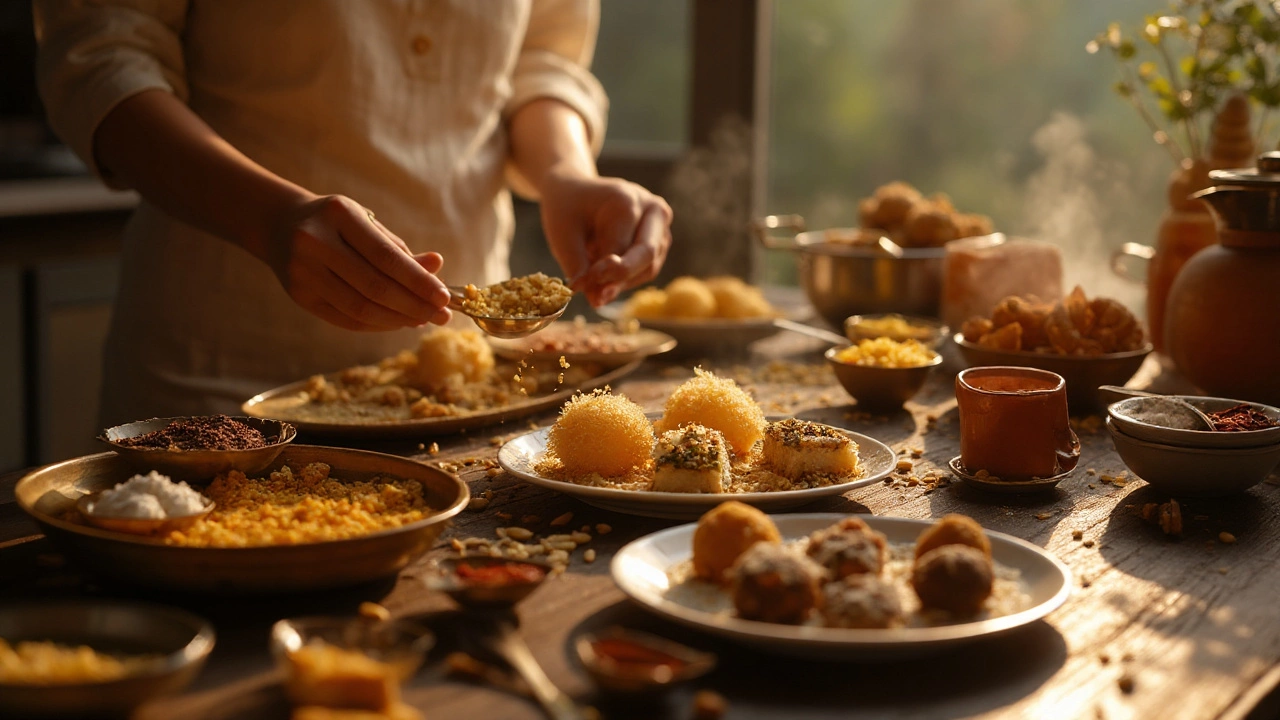Low GI Indian Sweets: Enjoy Sweetness Without the Sugar Spike
Craving something sweet but worried about blood‑sugar spikes? You don’t have to give up Indian mithai altogether. With a few ingredient tweaks and smart choices, you can indulge in desserts that keep the glycemic index (GI) low and still taste amazing.
What Makes a Sweet Low GI?
GI measures how fast carbs raise your blood glucose. Foods with a GI under 55 are considered low. In sweets, the main culprits that push the number up are white sugar, refined flour, and honey in large amounts. Swapping these for natural sweeteners, whole‑grain flours, or adding protein and fiber can dramatically lower the GI. For example, replacing half the sugar with stevia or using almond flour instead of maida reduces the carb load and slows digestion.
Low‑GI Indian Sweet Ideas & Simple Swaps
Here are some popular Indian sweets you can modify to keep the GI friendly:
1. Besan Ladoo – Traditional recipes call for a lot of sugar. Try using a mix of jaggery and a pinch of erythritol, and add chopped nuts for extra protein. The chickpea flour already adds fiber, keeping the spike low.
2. Coconut Barfi – Use fresh coconut milk, a touch of coconut sugar, and ground flaxseed. Flaxseed adds fiber and healthy fats that blunt the sugar impact.
3. Sugar‑Free Rasgulla – Make the cheese balls with low‑fat paneer, then soak them in a light syrup made from monk fruit and a splash of rose water. The protein in paneer slows glucose absorption.
4. Oats & Date Ladoo – Blend rolled oats, dates, and a spoonful of peanut butter. No added sugar needed because the dates provide natural sweetness, and oats keep the GI low.
5. Sweet Potato Halwa – Swap regular potatoes for sweet potatoes, use a tiny amount of jaggery, and finish with a sprinkle of cinnamon. Sweet potatoes have a lower GI than white potatoes and add extra fiber.
Tips to keep any sweet low GI:
- Portion control: Even low‑GI desserts can add up if you eat a huge serving. Aim for a handful or a small piece.
- Pair with protein: A few almonds or a spoon of Greek yogurt alongside a sweet helps balance blood sugar.
- Use spices: Cardamom, cinnamon, and fenugreek not only boost flavor but also improve insulin sensitivity.
- Mind the cooking method: Over‑cooking caramelized sugar raises the GI. Keep sautéing short and gentle.
When you’re at a restaurant, ask if they can reduce the sugar or replace it with a natural alternative. Many chefs are happy to accommodate a low‑GI request, especially if you explain you’re watching your carbs.
Bottom line: You can still enjoy the joy of Indian mithai without the dreaded sugar crash. By choosing low‑GI ingredients, adding protein or fiber, and keeping portions sensible, you’ll satisfy your sweet tooth and stay on track with your health goals.
Which Indian Sweet Is Healthy? Best Choices, Portions, and Smart Swaps
Wondering which Indian sweet is healthy? See the best picks, portion sizes, nutrition table, and quick healthier recipes. Simple, evidence-backed, and practical.
